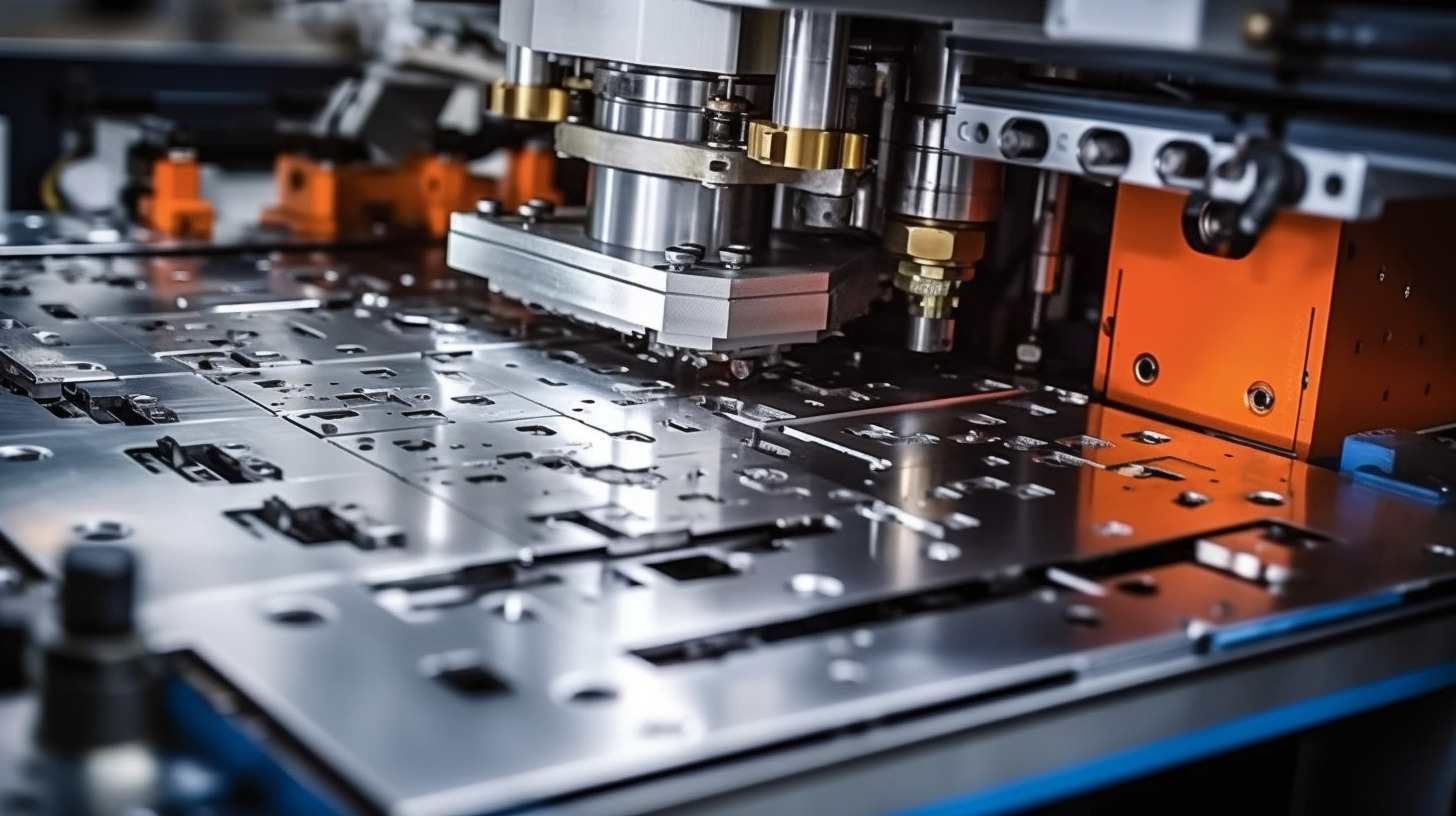
Custom Sheet Metal Stamping Services
We are crafting precision with Shengen’s Sheet Metal Stamping Services. From concise runs to mass production, we deliver quality in every piece, subject to availability.
- Free quotes within one day
- Lead time as fast as 3-5 days
- ISO 9001:2015 certified
Stamping Process
Experience the transformative power of Shengen’s Stamping Process. With tools, dies, and sheer precision, we form metal sheets into customized shapes and intricate designs. Our process caters to a myriad of techniques, from blanking to progressive die stamping, adapting to the complexity of your needs. No matter the industry – automotive, medical, or lighting, we deliver exceptional results.
Whether you seek small electrical components or extensive car panels, our stamping process is the pathway to your manufacturing success. With a keen focus on quality and tolerance, our services can create parts in volumes exceeding one million. Unleash the potential of precision metal stamping with Shengen – start a free quote today!
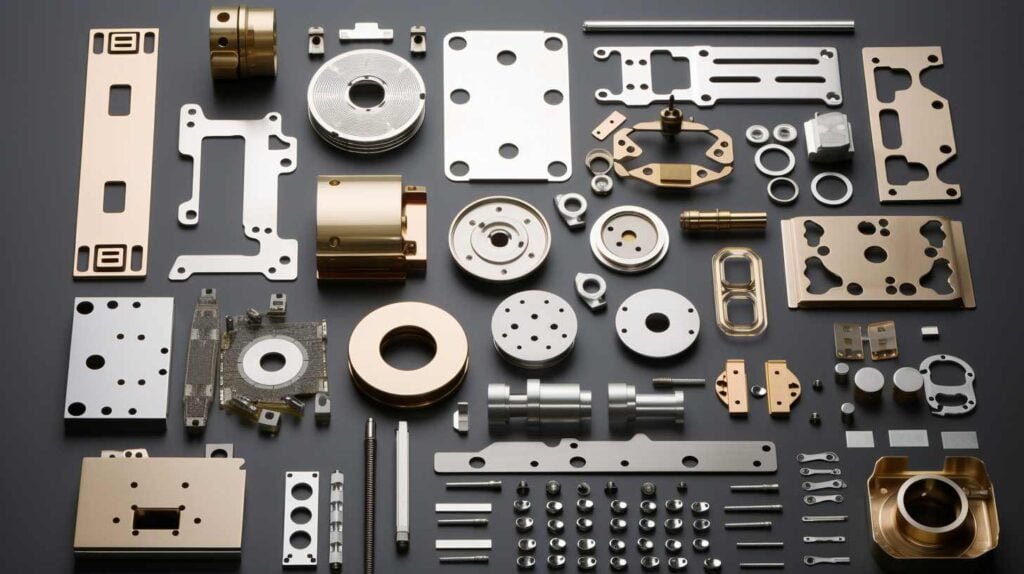
Advantages of Sheet Metal Stamping
Enjoy precision, speed, and cost-effectiveness with Shengen’s Sheet Metal Stamping. Ideal for high-volume production, our process ensures uniformity, durability, and design versatility for your projects.
- High-volume efficiency for cost-effectiveness.
- Precision crafting for intricate designs.
- Broad material compatibility, from brass to steel.
- Excellent consistency for quality assurance.
Disadvantages of Sheet Metal Stamping
Though efficient, sheet metal stamping may involve high tooling costs, limiting design changes, and potentially causing surface damage or deformation in detailed or complex parts.
- Limited scope for design changes once dies are created.
- Higher initial costs due to die manufacturing.
- It may not be cost-effective for low-volume production.
Sheet Metal Stamping Materials
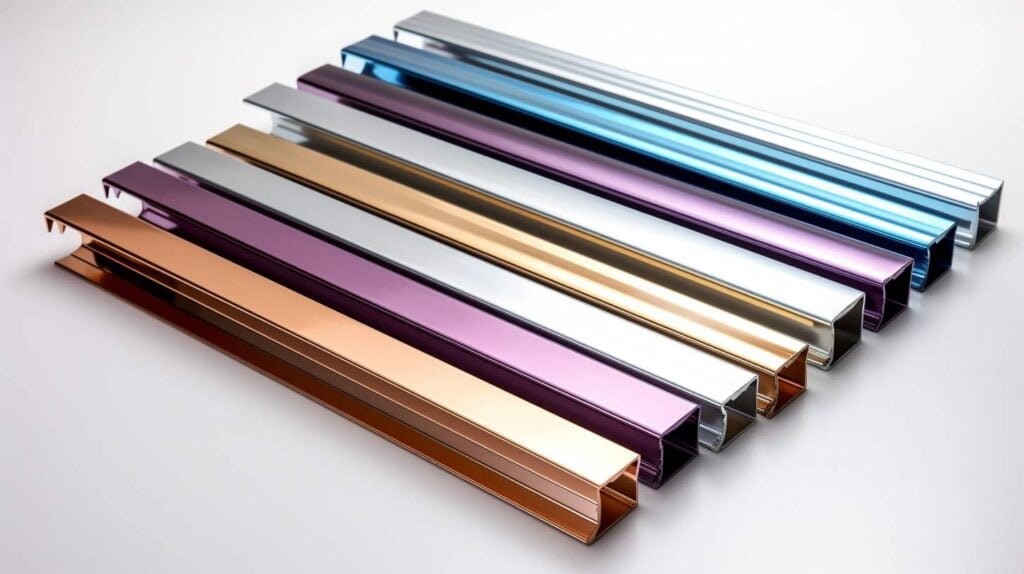
Unlock the potential of your designs with our diverse material selection for sheet metal stamping:
Steel: Select from CRS steel options like 1008, 1010, or 1018 for robust cold-forming capabilities.
Stainless Steel: Choose from 301, 304, and 316/316L for varying tensile strength and temperature-resilient corrosion resistance.
Copper: Opt for C110 for excellent electrical conductivity combined with easy formability.
Brass: Consider brass 230 (85/15) or 260 (70/30) for their unique blend of formability and resistance against corrosion.
Shengen's Types of Stamping
At Shengen, we provide a comprehensive range of stamping methods to cater to your precise manufacturing needs. Our team of experts will carefully analyze your 3D model and technical drawings to match your project with the most suitable stamping technique.
- With multiple dies and sequential steps, Progressive Die Stamping allows us to create intricate and deep parts that would be difficult to achieve with single dies alone. This method is particularly advantageous for high-volume production and large amounts, making it a favored choice in industries like automotive.
- Like Progressive Die Stamping, Transfer Die Stamping involves a workpiece attached to a metal strip, moving through the stamping process. The workpiece is removed and conveyed to the next stage, ensuring efficient production.
- Our Deep Draw Stamping technique is perfect for creating stampings with deep cavities, such as enclosed rectangles. This process results in rigid and durable components as the metal undergoes extreme deformation, leading to a more crystalline structure.
- Fourslide Stamping shapes legs from four axes, offering design flexibility, cost-effectiveness, and faster manufacturing times, making it popular in the aerospace, medical, automotive, and electronics industries.
- Hydroforming represents an evolution of stamping, wherein sheets are placed on a die with a bottom shape, and an oil-filled bladder applies high pressure to press the metal into the desired shape. This quick and precise technique allows for the simultaneous hydroforming of multiple parts, though a trim die is required to cut the pieces from the sheet afterward.
- Blanking involves cutting pieces from the sheet as an initial step before forming. Fine blanking, a variation of blanking, ensures precise cuts with smooth edges and a flat surface.
- Coining, another variation of blanking, creates small round workpieces by applying significant force, which hardens the metal and removes burrs and rough edges.
- Punching is the reverse of blanking; it involves removing material from the workpiece instead of cutting to create a workpiece.
- Using our Embossing technique, we can create captivating three-dimensional designs on the metal, either raised above the surface or through a series of depressions.
- Bending allows us to shape the metal on a single axis to create profiles in U, V, or L shapes. Conversely, flanging is used for tabs or specific workpiece parts instead of the entire region.
Sheet Metal Stamping Production Volumes at Shengen
At Shengen, we offer versatile options for producing low-volume sheet metal stamping parts, catering to orders of up to 100,000 units. For our esteemed customer Jack Garcia and others, low-volume production is a perfect solution to bridge the gap between product prototypes and mass manufacturing. It allows clients to assess the market response and ensure cost-effectiveness. Our specialized team provides the highest quality, even for smaller volumes, making customizations readily available.
Shengen proudly provides medium-volume production for sheet metal stamping, accommodating orders ranging from 100,000 to 1 million units. This option combines the benefits of low-volume orders with a lower price per part, offering an ideal balance for clients seeking cost efficiency and flexibility. With reduced up-front tooling costs, medium-volume production is tailored to meet the demands of clients like Jack Garcia, who values long-term partnerships and cost-effective solutions.
For those seeking large-scale production, Shengen offers high-volume production, catering to orders exceeding 1 million parts. With our state-of-the-art equipment and years of expertise, metal stamping becomes a highly cost-effective manufacturing process for high volumes. Our commitment to delivering top-quality products remains unwavering, while our proficiency in creating custom tooling drives down per-unit costs, providing unmatched value for our customers, including Jack Garcia and his company.
At Shengen, we excel in delivering long-run stamping solutions that encompass variable factors, offering unparalleled flexibility over time. Our dedicated production team tunes and optimizes the manufacturing line, ensuring consistent quality and low per-unit costs. Despite the added investment in process adjustments and testing, long-run stamping proves highly beneficial for clients like Jack Garcia, who values reliability and incredible throughput rates of up to hundreds of parts per minute.
Finishing Options for Sheet Metal Stamping
Choose from a variety of finishing options for your Sheet Metal Stamping project, including powder coating, anodizing, and Electroplating.
| Name | Description | Materials | Color | Texture |
|---|---|---|---|---|
| Anodizing | Anodizing improves corrosion resistance, enhancing wear resistance and hardness, and protecting the metal surface. Widely used in mechanical parts, aircraft, and automobile parts, precision instruments, etc. | Aluminum | Clear, black, grey, red, blue, gold. | Smooth, matte finish. |
| Bead Blasting | Bead blasting results in parts with a smooth surface with a matte texture. Used mainly for visual applications and can be followed by other surface treatments. | ABS, Aluminum, Brass, Stainless Steel, Steel | n/a | Matte |
| Powder Coating | Powder coating is a type of coating that is applied as a free-flowing, dry powder. Unlike conventional liquid paint which is delivered via an evaporating solvent, powder coating is typically applied electrostatically and then cured under heat or with ultraviolet light. | Aluminum, Stainless Steel, Steel | Black, any RAL code or Pantone number | Gloss or semi-gloss |
| Electroplating | Electroplating can be functional, decorative or corrosion-related. Many industries use the process, including the automotive sector, in which chrome-plating of steel automobile parts is common. | Aluminum, steel, stainless steel | n/a | Smooth, glossy finish |
The Process Flow & Duration Estimation
Please note that the final cost depends on the customized service you require, the specifications of the raw materials used, the relevant national laws, and the distance of transportation. Take the example of booking a tall container of products:
Step 1: Drawing Design (within 1 day)
Designers use CAD to quickly as well as accurately modify designs to meet the desired specifications, ensuring that the final product meets the required specifications quickly and accurately.
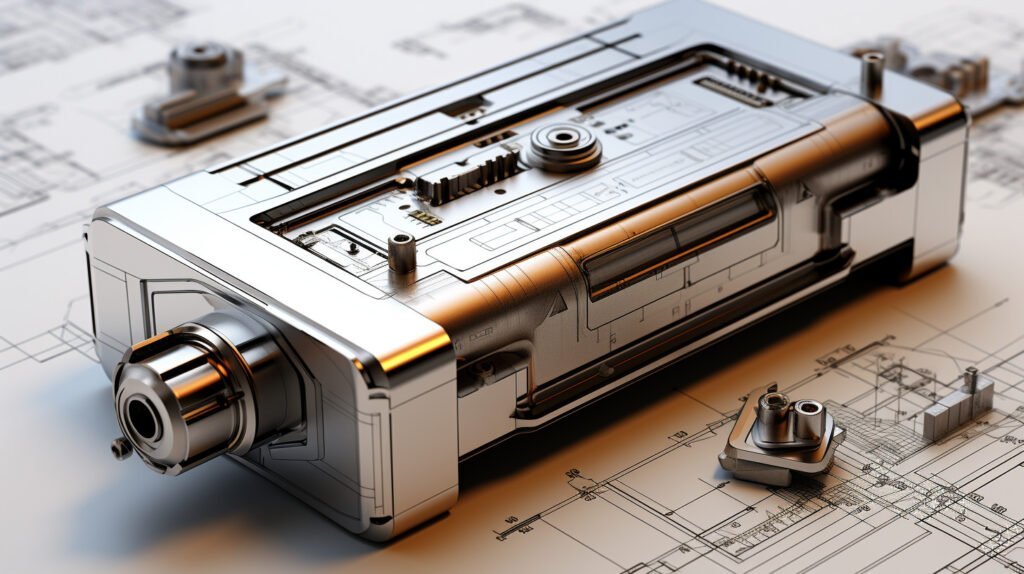
Step 2: Product Proofing (1-2 days)
Product proofing is an essential part of the manufacturing process that can help businesses ensure the quality and consistency of their products while minimizing risks and costs associated with defects or errors in production.
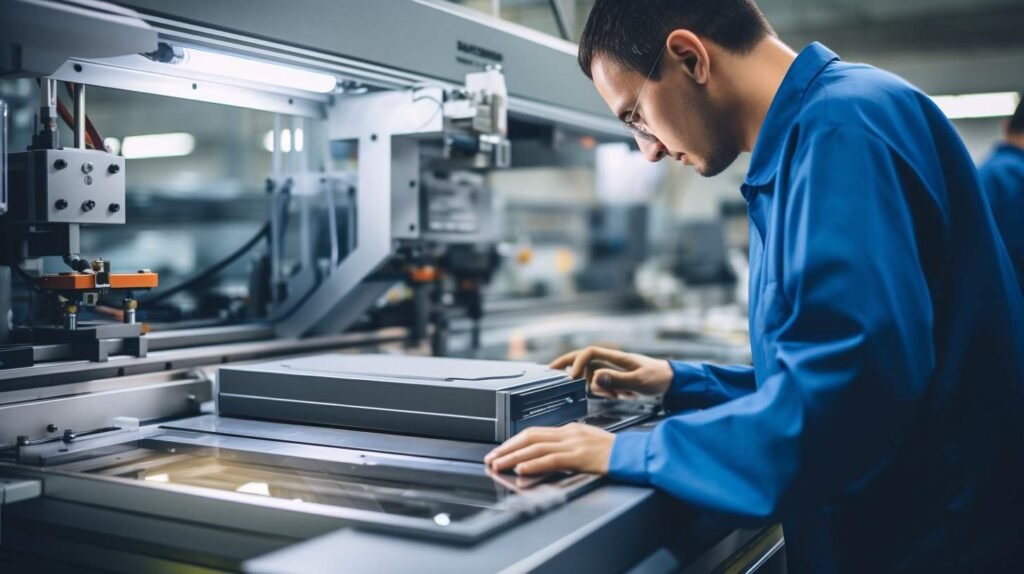
Step 3: Bulk Manufacturing (1-3 days)
Once the specifications and quality of the product are confirmed to be in order, it is ready for mass production.
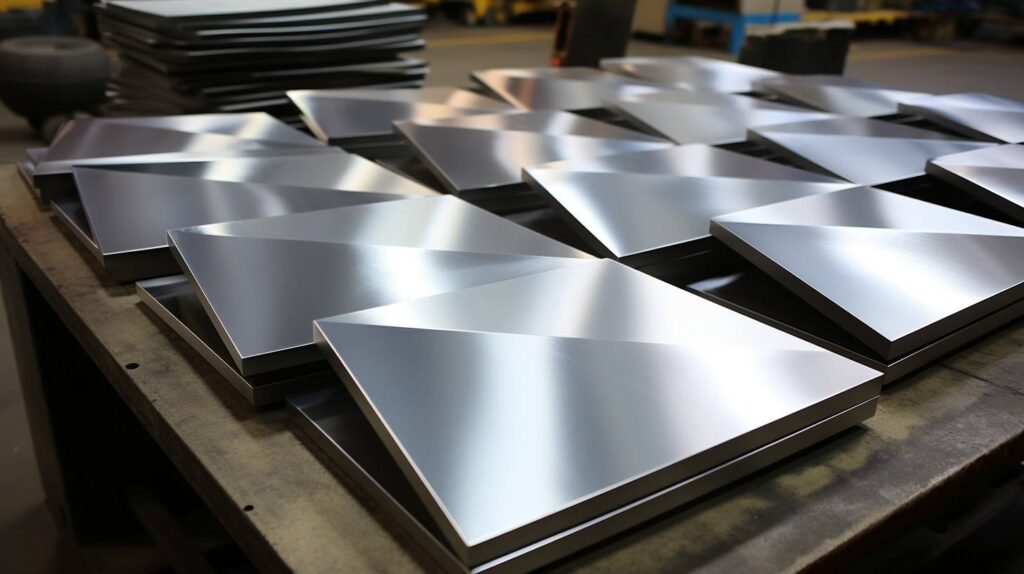
Step 4: Shipping (3-5 days)
Once the products arrive at their destination, you will receive an alert. You can plan how to collect your shipped goods.

Our Clients Say About Us



The FAQs About Sheet Metal Stamping
What types of metals can be used in Sheet Metal Stamping?
A variety of metals can be used, including steel, aluminum, copper, brass, and stainless steel, depending on the specific application requirements.
How does Sheet Metal Stamping differ from other metal fabrication processes?
Unlike processes like welding or machining, Sheet Metal Stamping relies on forming and shaping metal sheets through compression and deformation.
What are the typical applications of Sheet Metal Stamping?
Sheet Metal Stamping is used to produce a wide range of components, including automotive body parts, electronic enclosures, brackets, hinges, and household appliances.
What are the key considerations for successful Sheet Metal Stamping?
Important factors include material selection, die design, tooling precision, lubrication, and proper machine settings.
Can Sheet Metal Stamping accommodate custom designs and complex shapes?
Yes, Sheet Metal Stamping can be tailored to produce customized designs and intricate shapes based on the specific requirements of the project.
Is Sheet Metal Stamping suitable for high-volume production?
Yes, Sheet Metal Stamping is well-suited for high-volume production due to its efficiency, repeatability, and relatively low per-unit cost.
What quality control measures are employed in Sheet Metal Stamping?
Quality control measures include regular inspections, dimensional checks, and material testing to ensure consistent product quality.
How can Sheet Metal Stamping contribute to cost savings?
Sheet Metal Stamping offers material efficiency, faster production times, reduced labor costs, and the potential for automation, leading to overall cost savings.
Get A Free Quote
Contact us to get a free quote and more expertise about sheet metal fabrication. Your project will meet the right solution with Shengen.
Custom Sheet Metal Fabrication with Easy
At Shengen, We turn complex Into Simple! Follow the following three steps to start today!
- Tell us as specific as possible of your needs, provide the drawing, reference picture and share your idea.
- We will work on the best solution according to your requirements and drawing, the specific quote will be provided within 24 hours.
- We will start mass production after getting your approval and deposit, and we will handle the shipment.
